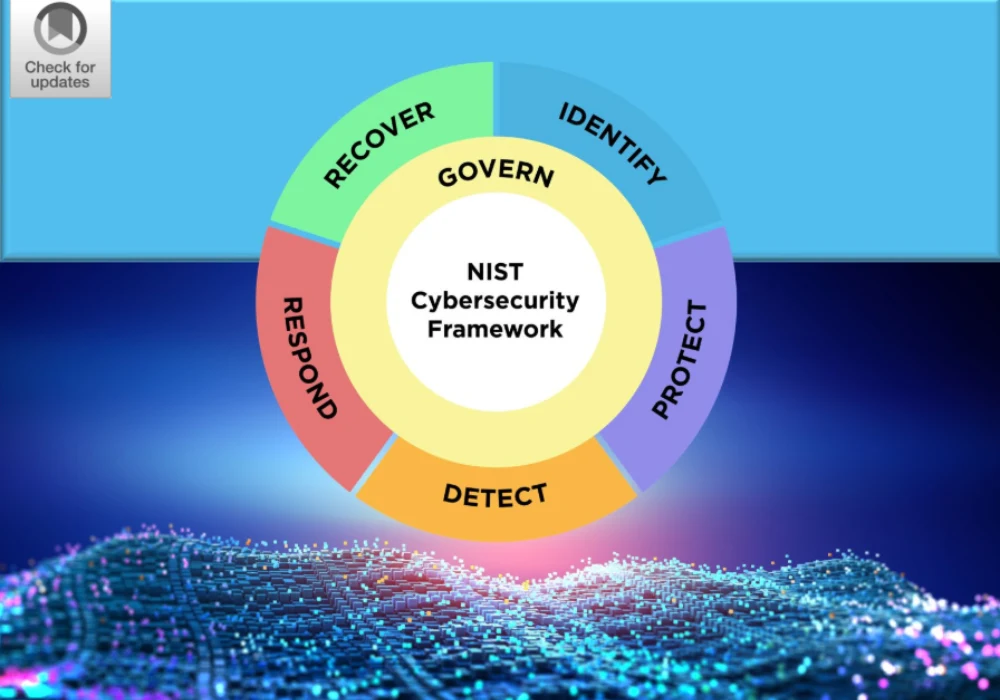In an era where cyber threats are ever-evolving, healthcare organisations face mounting pressure to safeguard their operations against cyberattacks. Cyber resilience strategies are essential, incorporating a holistic approach to backup and recovery to minimise disruptions to operations, workflows, and patient care following adverse events. These measures ensure that healthcare institutions can swiftly recover from cyber incidents and maintain the continuity of critical services.
The National Institute of Standards and Technology Cybersecurity Framework 2.0 is pivotal for healthcare cybersecurity strategy. It promotes an organization-wide understanding of security, transcending the IT department. Standardising terminology and fostering inclusivity bridge the communication gap between executives and frontline security personnel. This enterprise-wide approach broadens decision-making, instilling confidence and ownership among all stakeholders.
The Rising Threat to Healthcare organisations
Cybercriminals have increasingly set their sights on a diverse array of healthcare organisations, from large hospital systems to rural hospitals and specialised children's health institutions. The motivation is clear: financial gain from illicit activities. The sophistication of these cyberattacks has escalated, with attackers employing advanced technologies such as machine learning and artificial intelligence to enhance their malware and expand their illegal revenue streams.
In the unfortunate event of a breach, healthcare organisations often face exorbitant ransom demands, sometimes amounting to millions of dollars. Beyond the immediate financial burden, the process of restoring operations is labour-intensive and critical for maintaining patient care. Additionally, cyberattacks inflict long-term damage on an organisation’s reputation, leading to lost opportunities and diminished trust from patients and the public. This situation is compounded by a lack of understanding of the defensive shortcomings that allowed the breach.
Cyber Resilience: The Core Components
Cyber resilience is an organisation's ability to withstand, adapt to, and recover from adverse events, including cyberattacks, natural disasters, and operational failures. It encompasses proactive measures aimed at minimising disruption and maintaining essential operations. Central to cyber resilience are backup and recovery processes.
Backup and Its Role in Cyber Resilience
Backup involves creating copies of data and storing them in separate locations to prevent data loss. This process is vital for resilience as it ensures that data can be recovered in case of accidental deletion, system failure, or a cyberattack such as ransomware. By maintaining up-to-date backups, healthcare organisations can mitigate the impact of data loss and facilitate swift recovery.
The Recovery Process
Recovery entails restoring systems, data, and operations to their normal state after a disruptive event. For healthcare organisations, this involves not only rebuilding systems and retrieving data but also ensuring that patient care and essential services continue with minimal interruption. Successful recovery typically requires collaboration among specialists with diverse expertise, enabling the organisation to resume normal operations efficiently.
Integrating Resilience, Backup, and Recovery
While resilience, backup, and recovery serve distinct purposes, they are interconnected within the broader framework of cybersecurity and business continuity. Resilience focuses on creating an adaptable organisational structure capable of managing risks and sustaining operations during disruptions. Backup ensures the availability of critical data for recovery, while recovery involves the actual restoration of systems and services. Together, these elements form a comprehensive strategy to protect healthcare organisations from cyber threats and other disruptions.
The Importance of Cyber Resilience in Healthcare
- Patient Safety: Healthcare organisations handle vast amounts of sensitive patient data. Cyberattacks can compromise this data, jeopardising patient privacy and safety. If medical records are altered or inaccessible, patient care can be compromised, potentially leading to harm.
- Regulatory Compliance: Healthcare organisations must adhere to stringent regulations like HIPAA, which mandate the protection of patient information. Non-compliance can result in severe penalties and legal consequences.
- Operational Continuity: Digital systems are integral to healthcare services, from patient care to billing. Cyberattacks disrupting these systems can cause treatment delays and financial losses. Cyber resilience ensures the continuity of essential functions during and after an incident.
- Reputation Management: Trust is crucial in healthcare. A cyberattack can damage an organisation's reputation and lead patients to seek care elsewhere, impacting revenue and community standing.
- Financial Implications: Cyber incidents can be financially draining, with costs extending beyond immediate remediation to fines, legal fees, and compensation for affected individuals. Cyber resilience measures can mitigate these financial risks.
A holistic approach to cyber resilience, encompassing robust backup and recovery strategies, is essential for healthcare organisations. By preparing for and adapting to cyber threats, healthcare institutions can protect their operations, safeguard patient care, and maintain trust within their communities.
Source & Image Credit: NIST










